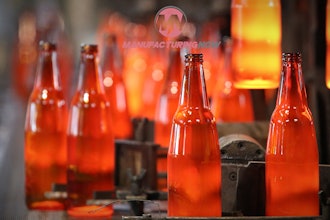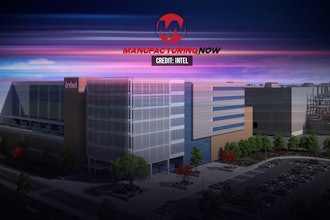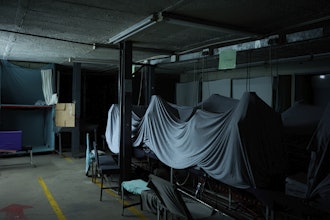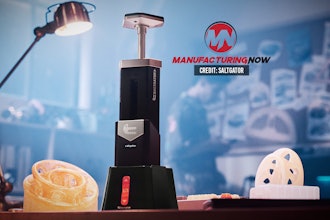
 Dave Burggren
Dave BurggrenHistorically, steam has been a powerful resource for space heating in homes and commercial buildings. Steam has proven extremely effective at providing controlled, consistent heat to distribute throughout a building without the need for pumps by simply using a durable steam boiler. In fact, the heating effectiveness of steam still makes it a staple heat source after more than a century.
Over the past 50 years, however, the use of steam for providing regular comfort (space) heating has declined, as many businesses employ newer technologies. Yet, specific industries and applications such as breweries, distilleries, dairy production and scientific laboratories are all increasing the demand for steam heating and enjoying myriad benefits as a result.
Why Steam Heating?
Many businesses require precise levels of heat to achieve a desired outcome. For example, in food production industries, it is tremendously important for all production to maintain consistent quality. This can be difficult to achieve with some other heating technologies, such as direct-fired heating. Direct-fired heating requires management of extremely high temperatures that can fluctuate and scorch products to yield varying results.
Steam heating, on the other hand, generates the same large heat loads but in a more controlled form, creating greater consistency and resulting in higher product quality. Steam heating is available from high- and low-pressure steam boilers, allowing businesses to match equipment to their unique needs. Many industries that may have traditionally opted for high-pressure steam are now realizing the benefits they can achieve with low-pressure steam applications.
Rising Use of Low Pressure Steam
The operating pressure of steam boilers should match the temperatures required for each specific application — such as pasteurizing beer or yogurt. It is a common misconception, however, that low-pressure steam boilers are not suited for process heating. In fact, many businesses running high-pressure steam boilers could likely satisfy heating needs with low-pressure steam boilers and achieve the same results, while saving on both equipment purchases and operating costs.
Low-pressure steam is limited to 15 PSI (pounds per square inch). High-pressure steam applications require more than 15 PSI. However, with high pressure steam, complex and costly regulations set in. Owning and operating high-pressure steam systems may require staff to undergo specific training and certification, and require that staff be present 24 hours per day. Businesses must purchase additional, specialized insurance coverage specific to high-pressure steam. Therefore, opting for low-pressure steam when it satisfies the process requirements reduces regulatory burden, increases staffing flexibility and reduces overall insurance costs.
In addition, high-pressure steam systems can be more expensive to purchase, install and repair. High-pressure steam systems often call for expensive, specialized welding during assembly or repairs, adding to cost of ownership.
While many steam heat applications can easily be accomplished with either low or high-pressure systems, some processes are better suited for high-pressure technology. For example, high-pressure steam is ideal for extremely large facilities with high heat demands. These applications need much higher pressure — 60 PSI and above.
Modern Day Low-Pressure Steam Applications
There are many growing industry applications in the U.S. that embrace low-pressure steam heat for its cost-efficiency and versatility.
Food and Beverage
Pasteurization, in particular, requires products to be heated to very specific temperatures to eliminate certain harmful pathogens, without overheating and impacting taste.
An increasing number of small craft brewers, micro-pubs, and micro-distilleries are enjoying the low costs associated with low-pressure steam heat while achieving consistent batches and reducing waste. In addition, food and beverage industries such as dairy production can use their steam boilers to create hot water through a steam-to-water heat exchanger for cleaning and other sanitizing needs.
Factors to Consider
When selecting a low-pressure steam boiler, buyers should take inventory of their business’ needs and facility amenities before making a selection. Most low-pressure steam boiler systems are highly configurable to match the unique needs of different applications. Furthermore, many low-pressure boiler systems can be built into existing systems or designed for new installations — ensuring consistency and efficiency for each individual application.
Further underscoring their versatility, low-pressure commercial steam boilers come in a variety of sizes and run on several different fuel sources. High-quality options can operate on natural gas, propane, oil or a dual fuel option, while ranging in size from 48 lb/hr to 8,800 lb/hr in a single boiler.
When evaluating boiler options, determine what is required for optimal production first and then build a system to match to avoid unnecessary costs. For businesses with limited demands, there are simple atmospheric burners available at low costs. For higher-demand operations, power burner models allow for greater capacity and flexibility.
Controls for the burners also are customizable to enable varying levels of precision in temperature regulation throughout the system. Burner control ranges from:
- Good: Simple on/off functionality
- Better: Low/high/low — offers low-stage to more closely match lighter loads and reduce energy consumption
- Best: Full modulation — offers precision heating and variable controls
Businesses with complex heating requirements may opt for a multiple boiler control system to run larger operations more efficiently.
Finally, businesses should choose a low-pressure steam boiler after consultation with a professional in the industry with expert knowledge on specifying the best boiler to meet steam system operational needs. An industry expert can explain the different steam piping designs available to ensure the product fits the application seamlessly and achieves optimal performance.
Dave Burggren is Director of Commercial Sales for Weil-McLain, a leading North American designer and manufacturer of hydronic comfort heating systems for residential, commercial and institutional buildings. Founded in 1881, Weil-McLain is based in the Chicago suburb of Burr Ridge, Ill., with manufacturing facilities in Michigan City, IN. and Eden, N.C., and regional sales offices throughout the United States and Canada.






















